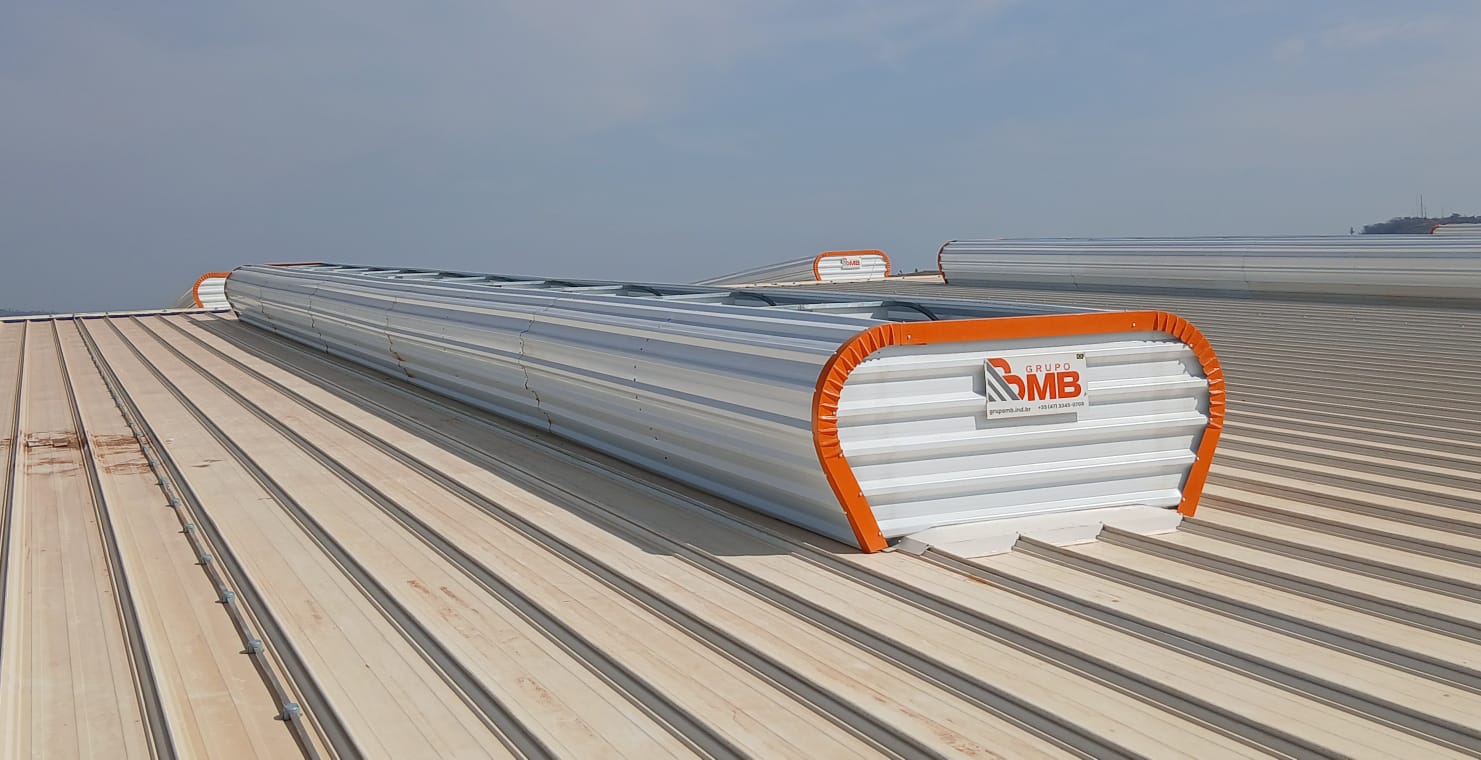The expenses with electric energy occupy the second position in the ranking of the expenses that weigh most in the Brazilian budget. This is what the survey conducted by the Association of Large Industrial Energy Consumers (Abrace), in partnership with the Ipespe institute, says. Nine out of ten interviewees in the survey report that the electric energy bill is more expensive now than in the last five years.
Water crises are one of the factors responsible for this increase. However, this problem was already more serious in 2021. Since then, Brazil has managed to avoid droughts due to the arrival of the rainy season. However, the scenario is still not completely optimistic. Therefore, thinking of sustainable alternatives to shield the impacts of the water crisis continues to be a priority in the most diverse sectors.
In the industry, it is no different. This segment has in its favor sustainable architecture, one of the great responsible for energy efficiency in factories. In this trend, in addition to reducing energy consumption, the company stands out for its sustainability, ensuring better market positions.
That is what we will talk about in this content. Read on and see how to reduce electricity costs by investing in sustainable solutions for natural lighting and ventilation!
Water crises and the rise of electric energy
Throughout 2021, electric energy was the item that weighed most heavily in the pockets of Brazilians, according to data from the Brazilian Institute of Geography and Statistics (IBGE). At the beginning of the second half of 2021, the National Electric Energy Agency (Aneel) started to adopt the so-called Flag 2 to compensate for the impacts generated by water crises.
This measure was necessary because, with the scarcity of water, it was necessary to resort to thermoelectric plants to generate energy. As the thermoelectric plants are expensive to run, the increase in the tariff flag was a way to pass on these costs to the consumer.
However, with the arrival of the rainy season between 2021 and 2022 - which replenished the reservoirs and relieved the operation of the systems - Brazil managed to overcome the water crisis. So much so that, in April 2022, Aneel anticipated the end of the charge related to the water scarcity flag. The perspective is that the collection flag will remain in the Green category - without increases - in 97% of the scenarios until the end of 2022.
But it is worth remembering that, despite the relief related to the attenuation of the hydric crises, the scenario is still very worrying, especially considering the period of economic instability and high inflation.
Not by chance, Aneel increased the value of the Yellow Flag by 56% and the Red 1 by 57%. In other words, if it is necessary to use these scarcity flags again, the value of electricity will be even higher than in 2021. Therefore, the awareness around sustainable practices continues to be one of the most viable ways to reduce energy consumption.
In the industrial segment, this concern is even more urgent. This is because the extension of the production chains consumes much more energy. In this sense, in addition to investing in renewable sources, managers have prioritized intelligent systems for lighting and ventilation in industries. We will talk more about these systems throughout the content.
How do the different tariff flags impact the water crises?
We saw that the adoption of the water scarcity flag represented a significant increase in the price of electricity in Brazilians' pockets. We also saw that, with the arrival of the rainy season, the Green flag is back in effect. In this case, it means that there is no increase in the variable costs of electricity generation.
In addition to the Green Flag, Aneel works with the Yellow, Red 1 and Red 2 Flags. The values of these tariff flags for the period July 2022 to June 2023 are defined as follows:
- Yellow Flag (less favorable conditions): R$2.989 every 100 kWh consumed;
- Red Flag 1 (unfavorable conditions): R$6.500 every 100 kWh consumed;
- Red Flag 2 (very unfavorable conditions): R$9.795 per 100 kWh consumed.
How can the industrial sector help avoid water crisis scenarios in the country?
For some time now, investment in renewable sources of energy has become a global trend, such as wind harvesting, solar energy, and biomass. In Brazil, this segment has grown exponentially in recent years and has gained even more strength in the context of the water crises. But as these are high investments with long-term returns, they may not be the best choice for those in a hurry.
In this case, other sustainable architecture alternatives are more interesting, such as natural lighting and ventilation systems. These solutions bring faster payback and have results that go beyond energy savings.
This type of solution helps industries to achieve energy efficiency. In addition, natural lighting and ventilation accelerate productivity in factories, making them, in fact, sustainable.
Not surprisingly, industries that combine energy efficiency and optimized processes are more likely to receive LEED Certification. The main seal of industrial sustainability in the world, LEED is used in more than 160 countries. The certification works as an attestation of the social responsibility of companies, proving the efficiency of their production processes.
Next, we bring you more details about these sustainable solutions that can optimize your production chain, bringing energy efficiency and significantly reducing the impacts of the water crisis.
Daylighting solutions
Prismatic domes are champion options when it comes to daylighting for industry, operating at zero energy cost. With these structures, the factory is no longer hostage to artificial lamps throughout the workday.
This is only possible thanks to the prismatic polycarbonate. The technology guarantees the ideal diffusion of sunlight, blocking UV rays and keeping the shed well lit for an average of eight hours a day.
Reducing the use of the lamps for so long and over several months generates a very significant reduction in the energy tariff. Beyond budgetary control, the industry also gains in terms of performance. An efficiently lit environment favors the productivity and well-being of employees.
Natural ventilation solutions
Natural ventilation systems that combine shutters and industrial louvers are also excellent resources for those seeking energy efficiency. These solutions provide thermal comfort inside the shed and avoid the use of air-conditioning units. In addition, the air quality improves considerably and the constant renewal prevents the accumulation of stale air.
We can say that natural ventilation systems are indispensable solutions for those seeking to combine thermal comfort, team productivity and energy savings in the industry. In addition to providing more quality of life in the workplace, these solutions help managers to avoid the impacts of the water crisis in more alarming scenarios.
Do you know how ventilation projects contribute to sustainability in industry? Take our quiz and find out if you know what you are talking about!
Solutions focused on sustainability
The solutions focused on sustainability, such as domes, lanterns and industrial blinds have been consolidating as priorities both in new construction and in industrial retrofit projects. The practice of retrofit, in fact, is often the most viable technique to modernize the industrial shed without having to pay for a new structure from scratch.
The installation of lighting and natural ventilation solutions are a highlight in this type of project, and can even be implemented with the help of computer engineering methodologies that ensure the high performance of the systems.
The application of Computational Fluid Dynamic (CFD), for example, allows to validate in virtual reality the calculations required to design a natural ventilation project with maximum performance. Thus, in addition to ensuring thermal comfort and air quality in the industrial environment, there will be no energy consumption from these systems or from the use of air conditioning devices, which can be dispensed with.
So if you are looking to modernize your plant facilities for energy efficiency, you already know where to start your investment. Like the idea? Take a look at how the Lubeka factory reduced its electricity bill in a short time with the MB Group's smart solutions!





